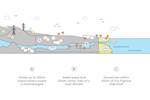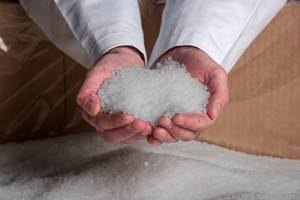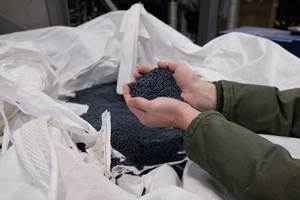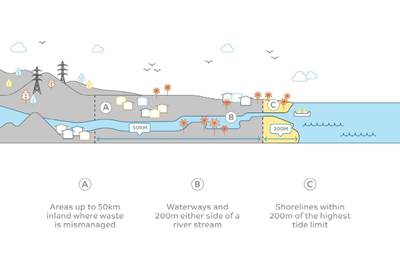Circular Manufacturing Helps Startup Produce Sunglasses from Recycled Material
Yuma Labs has created a closed-loop model for its sunglasses line.

Yuma Labs sunglasses are made from recycled materials, including ocean plastics. Photo Credit: Yuma Labs.
Belgian sustainable sunglass maker Yuma Labs is truly focused on a circular economy as the company’s specs are made from plastic reclaimed from the ocean—old bottles and nets, specifically.
Yuma Labs Sebastiaan De Neubourg founded the company in 2016 after he left his previous job as a consultant specializing in the circular economy.
“I was doing a lot of workshops with companies, startups, and entities on how to implement circularity into their business models,” he said. “We developed many great ideas, but they only lived in Post It notes and weren’t implemented.”
De Neubourg said the friction occurred because it is not easy for companies to change their business structures and processes towards a circular economy.
“So, I figured that starting a company where I could illustrate the circular economy myself via creating a tangible, easy-to-understand product, and process – in this case, sunglasses,” he said. “When I say ‘circular economy’ for Yuma Labs, I take it very literally. We want to make sure that all the plastics with which we make our glasses are not only made from recycled materials but are recyclable at end-of-life.”
Yuma Labs initially started developing its own complete in-house process via 3D printing in 2016, and in 2017, started its first successful Kickstarter campaign through which they sold their first collection.
After the crowdfunding campaign, Yuma Labs shifted its business model to B2B from B2C.
“We have our label, Yuma Labs, but most of our revenue comes from B2B activities,” he said. “We design, produce, ship, and recycle a collection of sunglasses, either white-labeled or collaborating with existing fashion brands to turn their existing business into a more circular one.”
Materials
In addition to ocean plastics, the company also uses recycled PET from post-consumer bottles.
The biggest challenge when working with recycled materials is the consistency of the material, De Neubourg said. “The quality of a single batch, and through various batches throughout a production line, needs to be very consistent; otherwise, you get fluctuations in the quality of the product, which has given us a lot of headaches,” he said.
Yuma Labs now uses recycled PET from Denmark, Germany, and the Netherlands because they have a thorough waste sorting process and clean materials and work with recycled PET from post-consumer bottles. The recycled fishing nets are from the south of Europe, recycled acrylic that originates from Italy, and the company works with specific partners specializing in these kinds of recycled plastics. De Neubourg said they prefer working with larger players that can provide the material quality they need. They’re also working on expanding the types of materials they use.
“We always use pure, single-material plastics. Mixed plastics become challenging to recycle at end-of-life,” he said. “Therefore, we diligently ensure that the plastic we use throughout the lifecycle of the glasses is as pure as possible.”
When customers wear out a pair—or the next fashion cycle demands an eyewear upgrade—a bar-coded return label inside the product package lets them slip the sustainable sunglasses into the nearest mail slot. For Yuma Labs, it means a continuous supply of raw material and a chance to stay engaged with customers and boost loyalty.
While Yuma Labs originally used its own 3D printers to produce the recycled sunglasses, it proved too much for a single company, so they moved to an outsourced production entirely. They now work with China, Vietnam, and Italy to produce the sunglasses, which are either 3D printed via SLS, multi-jet fusion 3D printing or injection molding. In addition, Yuma Labs is using Autodesk’s Fusion 360 CAD software for 3D modeling.
“3D modeling via Fusion 360 also helps ensure that the sunglasses we produce can also easily be disassembled,” De Neubourg said. “We can easily simulate this within Fusion, an essential feature when discussing a circular economy.”
Related Content
‘Monomaterial’ Trend in Packaging and Beyond Will Only Thrive
In terms of sustainability measures, monomaterial structures are already making good headway and will evolve even further.
Read MoreHow to Optimize Color Evaluation of Recycled Plastics
The right color measurement instrument and good working methods will minimize variability in color evaluation of PCR.
Read MoreNew Facility Refreshes Post-Consumer PP by Washing Out Additives, Contaminants
PureCycle prepares to scale up its novel solvent recycling approach as new facility nears completion.
Read MoreBASF Highlighting How They 'Make, Use and Recycle Future Solutions'
NPE2024: BASF is using its proprietary computer-aided engineering tool Ultrasim when designing for sustainability in a broad range of industries.
Read MoreRead Next
SABIC Develops New Polymers from Recovered Ocean-Bound Plastics
Resin giant partnering with Malaysia-based plastic recycling company HHI on this initiative.
Read MoreClothing Hangers Made from Ocean-Bound Plastics
New hanger made from 100% recycled plastic that is gathered from the ocean or intercepted before entering the ocean.
Read MoreFor PLASTICS' CEO Seaholm, NPE to Shine Light on Sustainability Successes
With advocacy, communication and sustainability as three main pillars, Seaholm leads a trade association to NPE that ‘is more active today than we have ever been.’
Read More

























